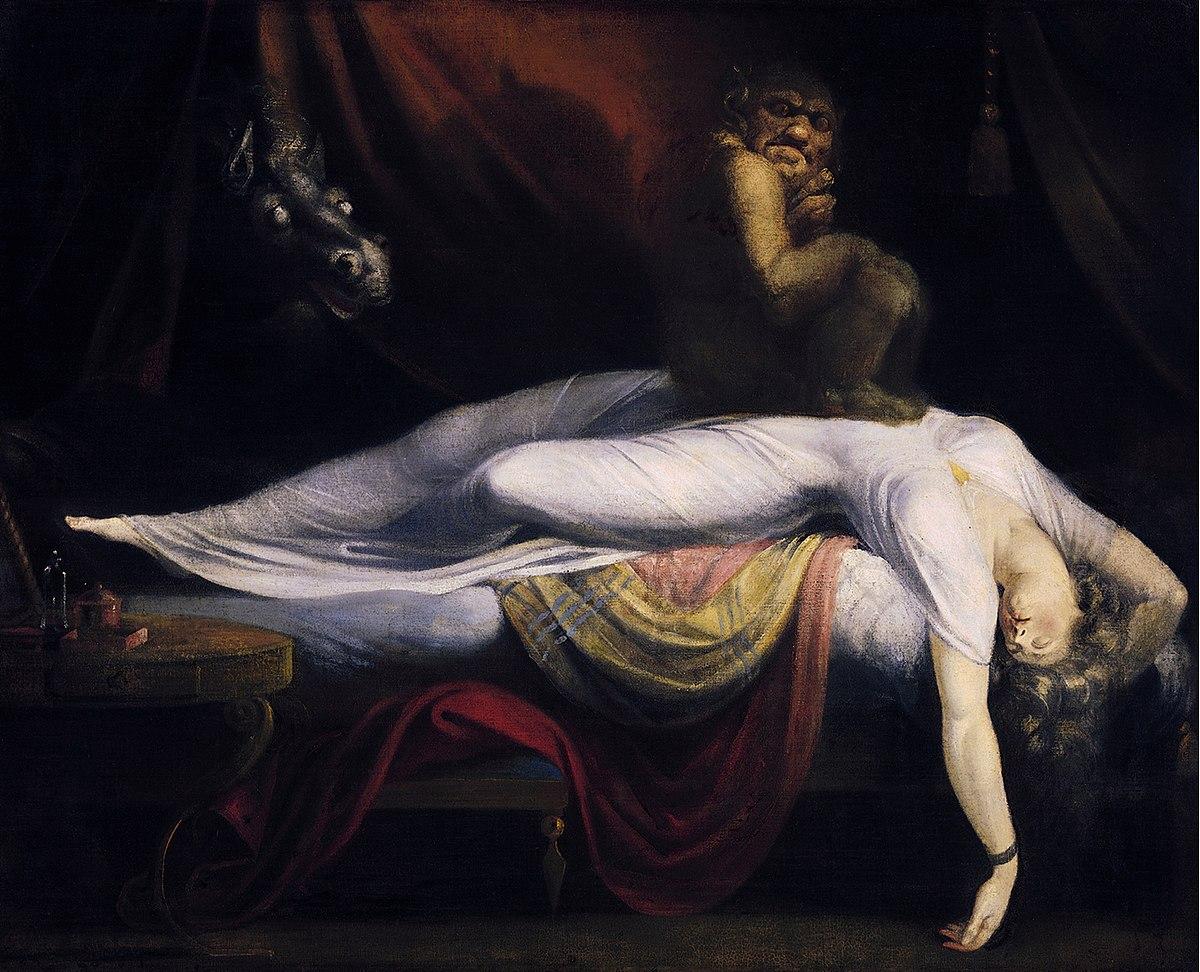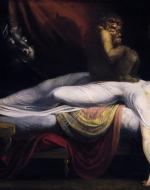Created by Sabrina Futia on Wed, 12/01/2021 - 12:06
Description:
Henry Fuseli’s 1781 oil on canvas painting The Nightmare depicts a sleeping woman being tormented by an imp and mare as she sleeps. The woman may be Anna Landolt, a woman Fuseli loved but who did not return his feelings. Her rejection deeply impacted Fuseli, leaving him psychologically tormented. As a result, he created this painting, where he expressed his feelings by subjecting Landolt to the same mental torture she made him experience. Similar themes are present in Samuel Coleridge’s 1798 poem “The Rime of the Ancient Mariner.” Akin to Fuseli, Coleridge suffered psychological trauma after nearly drowning. Subjecting the Mariner to a torturous experience at sea suggests that Coleridge worked through his trauma by subjecting his character to a similar traumatic experience. The Mariner is a victim of many horrible sights on his journey, and this horror can be seen in Mary Shelley’s 1818 novel Frankenstein. Shelley was influenced by both The Nightmare and “The Rime of the Ancient Mariner” when writing her novel, and she too follows the pattern of subjecting her main character to psychological trauma that is inspired by her own experiences.
Key Words: Psychological turmoil, trauma, horror, storytelling, nightmares


